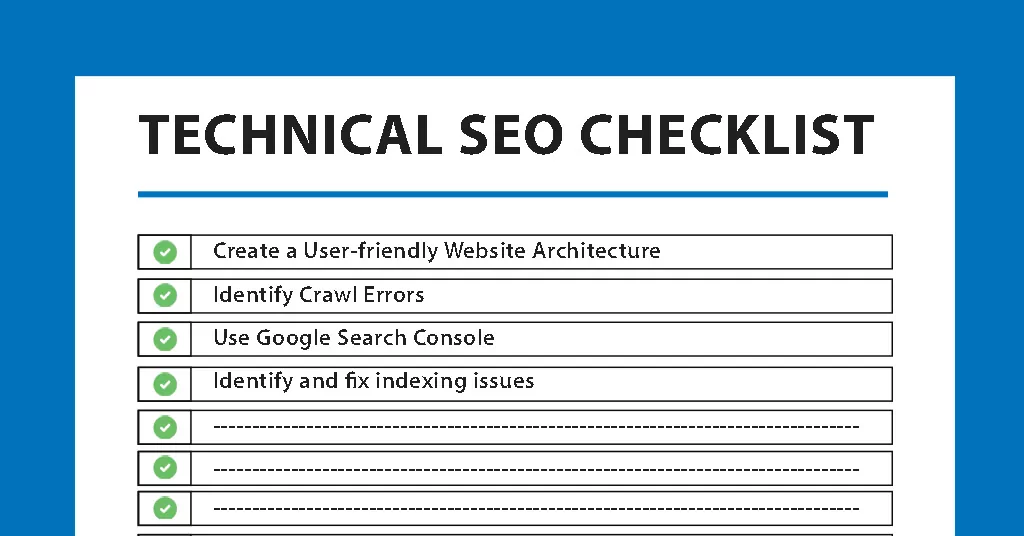How to develop a successful SEO strategy?
Table of contents
Developing a successful SEO strategy is essential for increasing website traffic. You can improve your website’s organic visibility and draw in more targeted visitors by optimizing it for search engines. According to SEO Jacksonville experts, the following actions will assist you in creating a fruitful SEO strategy:

Establish your objectives
Find out what you hope to accomplish with SEO. Having explicit objectives will direct your strategy and determine your level of success, whether it’s boosting organic traffic, raising rankings for particular keywords, or producing more leads.
Carry out keyword research
Find the most popular and pertinent search terms for your company by using keyword research tools. Concentrate on long-tail keywords with less competition but high audience relevance. Strategically include these keywords in the text of your website.
Optimize on-page elements
Make sure the on-page parts of your website are optimized. Title tags, meta descriptions, header tags, URL structure, and image alt text are all subject to optimization.
Produce top-notch content
Create a content strategy that emphasizes producing top-notch, educational, and interesting material. This raises your possibilities of obtaining beneficial backlinks while also assisting in drawing in and keeping your target audience. Attempt to give your readers genuine value while naturally including your goal keywords in your writing.
Create high-quality backlinks
Use a backlinking strategy to get high-quality links from reliable, pertinent websites. This can be accomplished through guest posting, content outreach, social media promotion, and involvement in forums or communities relevant to the sector. Backlinks are a crucial ranking feature that has a big impact on how visible your website is in search results.
Mobile-friendly website

With mobile devices becoming more and more prevalent, it is essential to have a mobile-friendly website. The user experience and search engine rankings of your website are both improved when the design and functionality are optimized for mobile visitors.
Reduce website load times
A quick-loading website is essential for both user experience and search engine rankings. By implementing caching strategies, CSS and JavaScript minification, fixing TTFB and INP errors, and image compression, you can reduce the time it takes for your website to load. To guarantee quick load times, regularly check and improve the performance of your website.
Improve user experience
Search engines place a high value on user experience, so make sure your website is simple to use, intuitive, and easy to browse. To make it simple for users to find what they’re looking for, provide clear and succinct content, apply intuitive design components, and optimize your website’s structure.
Make use of analytics
To monitor and gauge the success of your SEO activities, use website analytics tools. Keep track of important analytics like bounce rate, conversion rates, and organic traffic. Make data-driven judgments by frequently analyzing these indicators to find areas that can be improved.
Keep up with SEO trends
Since SEO is an area that’s continuously changing, it’s important to keep up with the most recent trends and algorithm updates. To keep educated and adjust your strategy as necessary, read industry blogs, participate in webinars or conferences, and network with other SEO specialists.
You may develop a successful SEO plan that significantly increases traffic by following these instructions and continuously improving your website for search engines. Recall that SEO is a long-term endeavor, and results might not appear right away. Maintain your commitment, keep an eye on results, and tweak your plan as necessary to meet your traffic growth objectives.
Utilizing Social Media Platforms to Increase Brand Recognition and Engagement
Utilizing social media sites is a useful tactic for raising customer awareness and involvement. You may interact with your target audience through social media, cultivate brand loyalty, and increase website traffic. Here are some strategies for using social media to increase brand recognition and interaction:
Select the appropriate social media channels
Determine the social media channels where your target market is most active. To increase your reach and engagement, concentrate your efforts on these channels. Popular websites like Facebook, Instagram, Twitter, LinkedIn, and YouTube are wonderful places to start, but you need to do some research on your target market to figure out which websites to prioritize.
Establish your goals and objectives
Do you want to engage your audience, raise brand awareness, or enhance website traffic? To gauge your progress, choose your key performance indicators (KPIs). Create a content strategy that supports your objectives and appeals to your target audience.
Produce high-quality, engaging content
Content highlights your brand’s personality and value proposition. This will help you create material that people want to share. To keep your material diverse and engaging, mix up the formats you use, including blog articles, infographics, videos, and photographs. By offering value, and amusement, or by addressing important business issues, you can get your audience to share your content.
Optimally complete and optimize your social media profiles
Utilize consistent branding across all media, including your logo, colors, and messaging. Create a captivating bio or “About” section that concisely conveys the key selling elements of your brand. Improve discoverability by adding relevant keywords and links to your website.
Interact with your audience
To establish connections and promote a feeling of community, actively interact with your audience. Participate in discussions about your industry, ask questions, and welcome feedback. Ensure that your audience feels respected and heard.
Make use of hashtags
Do your research and use pertinent hashtags to broaden the visibility and reach of your material on social media. By using hashtags, you may join in on popular discussions and reach a wider audience. To promote user-generated content and community involvement, use custom hashtags for your company.
Work with influencers
Look for influencers in your sector with loyal fan bases that share your brand’s ideals. To expand the reach of your business, work with them on sponsored content, guest blogging, or social media takeovers. Brand exposure and engagement can be greatly raised by utilizing the influencers’ audience and authority.
Conduct social media campaigns
Develop and carry out focused social media campaigns to advertise particular goods, occasions, or projects. To increase traffic to your website or landing pages, use eye-catching imagery, obvious calls to action, and trackable links. Following campaign results, evaluate your strategy and make changes in light of the information you learn.
Analyze and improve
Consistently evaluate the success of your social media campaigns using the analytics tools offered by each platform or by third parties. Keep track of analytics like reach, click-through rate, and conversions. Utilize this information to determine the types of content that are most effective with your audience and adjust your plan as necessary.
Keep up with trends and be flexible
The world of social media is quickly changing, with new features and fashions appearing all the time. Keep up with platform updates, algorithm modifications, and market developments to make sure your plan is still current and effective. According to Jacksonville SEO Company, try out new features or formats that complement your brand and target market’s preferences.
You may raise brand awareness, interact with your audience, and bring worthwhile traffic to your website by utilizing social media platforms well. To get the greatest outcomes, keep in mind to continuously assess your performance and modify your plan in light of data and insights.







